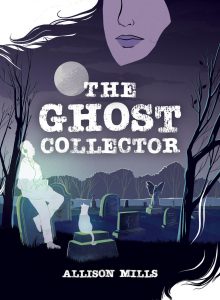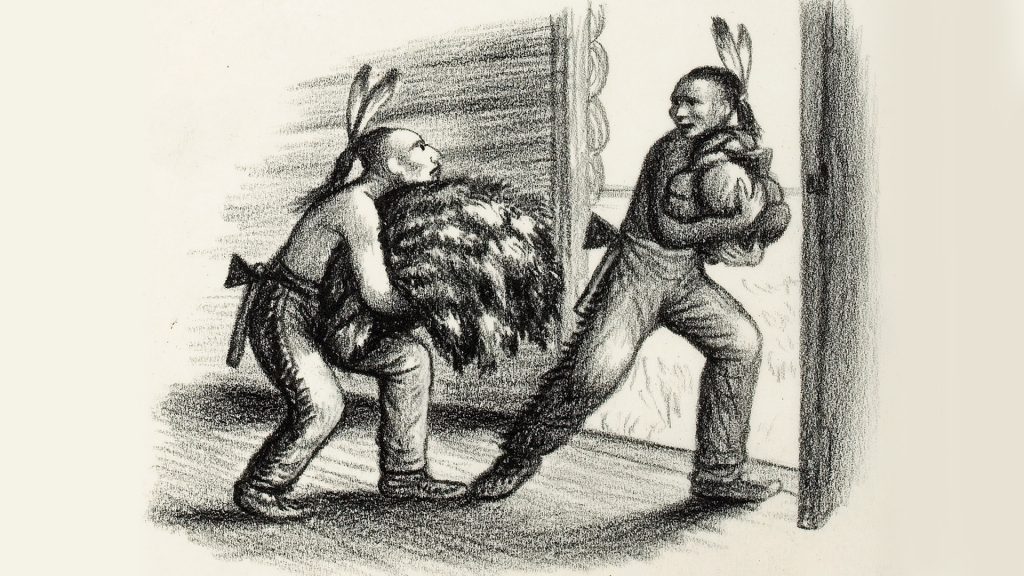 I grew up knowing I wanted to write for kids because children’s literature is what made me fall in love with reading. I wanted to try to provide that experience for other people, but in particular I wanted to write the kind of books I wished I’d had as a kid—books about Indigenous characters who got to experience magic and adventure too.
I grew up knowing I wanted to write for kids because children’s literature is what made me fall in love with reading. I wanted to try to provide that experience for other people, but in particular I wanted to write the kind of books I wished I’d had as a kid—books about Indigenous characters who got to experience magic and adventure too.
That was one of my main goals in writing The Ghost Collector, which centers around a Cree girl, Shelly and her grandmother, who help lost souls transition to the next world by catching them in their hair. The version of the supernatural presented in The Ghost Collector is rooted to Cree culture. Shelly’s experience of the world around her is tied to and influenced by her Indigeneity. It is an attempt to address what was lacking in the novels I read as a kid.
Children’s literature is fraught territory for Indigenous people. Although many classic works in the genre include Indigenous characters, the ways in which we’re represented are often harmful and problematic. They frame Indigenous peoples as a vanishing race, or happy to assimilate to European ways as a means to justify settler colonialism. Settler colonialism is a form of colonialism that seeks to replace the original population of a colonized territory with a settler society. The United States is a settler colonial nation.
You see this harmful depiction of Indigenous characters in Little House on the Prairie, where Native Americans are portrayed as violent and stereotypically “savage” in comparison to the “civilized” settlers; in Peter Pan stories, which positions Native Americans alongside fairies and mermaids; and in the Leatherstocking Tales, in which the white protagonist surpasses his Native guides in mastery of their own culture. These stories frame Indigenous characters as little more than props or set dressing for white protagonists. These works present us as violent and less than human, as mythical creatures, and as inherently inferior to European settlers.

This 1953 Garth Williams illustration for the Little House series depicts two stereotypical, shirtless Native American men stealing food and furs from the Ingalls’ cabin.
Even in the 90s, when I was a kid, there weren’t a lot of children’s books out there with good Indigenous representation and even fewer by Indigenous authors. My mother, who is a teacher-librarian in addition to being Cree, did her best, but the pickings were slim. This was especially true when it came to fantasy and sci-fi—my genres of choice. Science fiction in particular is notable for an emphasis on colonization narratives. For example, James Cameron’s Avatar (2009) is essentially just The Last of the Mohicans in space. When books did include Indigenous representation, it was mostly misrepresentation. Sometimes we didn’t exist as people at all, but as non-human characters (like the Na’vi in Avatar).
Either way, it was obvious the authors didn’t consider an Indigenous audience when writing their books. The effects of this go beyond the pages of books to the real world. These portrayals normalize our absence and create a fictional tale of peaceful, inevitable settlement in North America that means settlers never need to confront their complicity in the violent colonial history of the Americas. More often than not, when we pick up a book, we encounter a world we are not present in.
I have hope that this is beginning to change. In publishing—particularly in YA publishing—we’ve seen a push for greater diversity and more #OwnVoices books. People are becoming more aware of the need for better representation in children’s books. Novels like Cherie Dimaline’s The Marrow Thieves, Darcie Little Badger’s Elatsoe, and Eden Robinson’s Trickster Drift all present worlds in which Indigenous characters take center stage. Readers have access to criticism and scholarship by Indigenous academics and writers through social media and sites like American Indians in Children’s Literature.
We’re on the precipice of a potential sea change, but it requires a sustained investment in treating diversity as more than a trend from publishers and readers alike. Indigenous readers are here—we have always been here—and we’re invested in making children’s literature more representative. I hope, for the sake of future Indigenous kids, that non-Indigenous readers are turning up for more diverse voices too.
Allison Mills, College Archivist. Author of The Ghost Collector.
